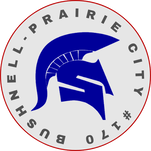What does this mean for the financial health of the District?
There will be 2 types of bond issuances to generate these funds: 1) self-purchased Working Cash bonds, and 2) debt certificates. The self-purchased Working Cash bonds will be borrowed against the balance in the Education Fund and repaid using County Facilities Sales Tax (1% sales tax) revenues. This will yield an additional $300,000 in revenue to the Education Fund from interest paid; the fund that incurs the greatest amount of expense to operate the District. The debt certificates will be repaid through the debt levy.
Will this increase the the District's tax rate?
The bond and interest tax rate for the District since 2015 has ranged from .25 to .32. Repayment of the debt certificates will yield a bond and interest tax rate ranging from .27 to .32; not higher than past rates. This range could also decrease should the District's equalized assessed value (property values) continue to be healthy.


 RSS Feed
RSS Feed

